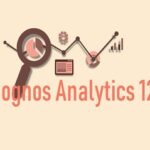Analytics & reporting
We redefine what data can do for you with our analytics & reporting services.
Business Analytics is instrumental in assisting small, medium, and large organizations in optimizing the value of their data, discovering valuable insights, devising strategic plans, and promptly responding to customer demands. As technology becomes more straightforward, our goal is to establish Enterprise Analytics that yields substantial returns relative to its benefits. We are methodically shaping our approach to transform Analytics & Reporting into a self-service technology, complemented by our ongoing learning initiatives and robust support systems.
Benefits
Collect relevant data
Customer understanding
Identifying market trends
Competitive analysis
Improved data access
Accurate reporting
Cost saving
Customer satisfaction
Enhanced productivity
Strategic planning
Trend insights
Greater revenue
Our Business Partners In Analytics & Reporting
Data Visualization
Dashboards and reports
Self-Service Analytics
No code, low code, self-service authoring
Data Exploration and Discovery
discover patterns and trends in their data through ad-hoc analysis
Mobile Access
Reports & Dashboards accessible on mobile devices
Collaboration and Sharing
sharing built content internally and use annotations and comments for effective communication.
Security and Governance
security and governance ensures sensitive information is protected and access is controlled.
Natural Language Processing (NLP)
Users can interact with data and generate insights using plain language queries.
Scheduled Reporting
schedule automated reports and distribution with ease.
Enroll for
Use Cases & Industry
Dive into the Analytics use cases by Industry & Department to learn about industry-specific solutions. Our Industries Page is a gateway to discovering how we impact businesses across various sectors. Explore the depth of our expertise, tailored services, and success stories that showcase the transformative impact we bring to different industries.
Resources

GameStop
To run a major international retail business effectively, data-driven decision-making is a must. Through BI tools such as IBM® Cognos® Analytics, GameStop is empowering business users to serve themselves with the data they need and transforming the IT team from a producer of reports to an enabler of business insight.

Mohegan Sun
Mohegan Sun, a US gaming and entertainment resort, boosts productivity, saving an hour daily for floor supervisors, and improves operating efficiency by deploying IBM Cognos Analytics software with help from IBM Business Partner LPA Software Solutions.

Honda Pakistan
To thrive in Pakistan’s highly competitive automotive market, Honda Pakistan aims to convert first-time purchasers into lifelong customers. Working with IBM® Consulting, they harness real-time analytics in SAP S/4HANA to enhance its planning and procurement processes. Using those insights, the company can keep dealerships stocked, and customers satisfied.

Ascendis Health Limited
Your company’s financial data is saying something. Can you hear it? With help from IBM Business Partner iOCO, Ascendis Health Limited replaced its outdated financial system with IBM Cognos Controller software, gaining unprecedented business visibility.

Knauf
Mohegan Sun, a US gaming and entertainment resort, boosts productivity, saving an hour daily for floor supervisors, and improves operating efficiency by deploying IBM Cognos Analytics software with help from IBM Business Partner LPA Software Solutions.

Robertson Group
Robertson Group was using spreadsheets for reporting, planning and forecasting, and its accountants were spending most of their time entering data manually from multiple data sources. This resulted in challenges with version control, duplication of work and data accuracy. IBM Business Partner Spitfire Analytics Limited used IBM® Planning Analytics powered by TM1® technology on IBM Cloud® to unify multiple data sources and automate complex reporting.
Visit Cresco's
Featured Blogs

The Uprising of Self-Service Analytics
FAQs
Business analytics refers to the skills, technologies, practices, for continuous iterative exploration and investigation of past business performance to gain insight and drive business planning.
Business analytics helps organizations make informed decisions by analyzing data to uncover trends, patterns, and insights that can drive strategic planning, optimize operations, and improve overall performance.
Business analytics can be categorized into descriptive analytics (what happened), diagnostic analytics (why it happened), predictive analytics (what will happen), and prescriptive analytics (how to make it happen).
Some common tools used in business analytics include Microsoft Excel, Tableau, Power BI, Python, R, SAS, IBM SPSS, and Google Analytics, among others.
Businesses can use analytics to analyze historical data to understand past performance, identify trends, predict future outcomes, optimize processes, segment customers, and personalize marketing strategies, ultimately leading to better decision-making.
Skills required for a career in business analytics include data analysis, statistical analysis, data visualization, programming (e.g., Python, R), problem-solving, critical thinking, and business acumen.
Businesses can ensure data privacy and security by implementing data encryption, access controls, regular security audits, compliance with regulations (e.g., GDPR, CCPA), and fostering a culture of data governance and ethics.
Challenges businesses may face include data quality issues, integrating data from multiple sources, lack of skilled personnel, resistance to change, data privacy concerns, and selecting the right analytics tools and technologies.
Businesses can measure the success of their business analytics initiatives by setting specific, measurable, achievable, relevant, and time-bound (SMART) goals, tracking key performance indicators (KPIs), and regularly evaluating the impact on business outcomes.
Real-world applications of business analytics include customer segmentation, churn prediction, demand forecasting, inventory optimization, fraud detection, sentiment analysis, and recommendation systems, among others.
Business intelligence (BI) refers to the technologies, strategies, and practices used by enterprises for the analysis of business information and data to make informed decisions.
Implementing BI can lead to improved decision-making, enhanced operational efficiency, better customer satisfaction, increased competitiveness, and improved financial performance.
Key components of a BI system typically include data warehousing, data integration, analytics and reporting tools, dashboards, data visualization tools, and predictive analytics capabilities.
Traditional reporting typically involves static, historical data presented in standardized formats, while BI involves dynamic analysis of data from various sources to uncover insights and support decision-making in real-time.
Data visualization plays a crucial role in BI by presenting complex data in a visually appealing and easy-to-understand manner, enabling users to identify trends, patterns, and insights more effectively.
Common challenges in implementing BI include data quality issues, data silos, resistance to change from stakeholders, insufficient user training, and ensuring alignment between BI initiatives and business objectives.
Self-service BI empowers business users to access and analyze data without requiring assistance from IT or data analysts. It allows users to create their own reports, dashboards, and visualizations using intuitive tools and interfaces.
BI can help in predicting future trends or outcomes through the use of advanced analytics techniques such as predictive modeling, data mining, and machine learning algorithms applied to historical and current data to identify patterns and make forecasts.
Data governance in BI refers to the policies, procedures, and controls implemented to ensure the quality, integrity, security, and compliance of data used in BI initiatives. It involves establishing rules for data usage, access, and management to maintain trust and reliability in BI outputs.
Power BI (Power Business Intelligence) is a suite of business analytics tools from Microsoft. It allows you to connect to various data sources, visualize your data through interactive dashboards and reports, and gain valuable insights to make data-driven decisions.
Power BI consulting is a service offered by professionals who can help your organization:
- Develop a Power BI strategy: This involves understanding your business needs, data sources, and desired outcomes to define a roadmap for successful implementation.
- Design and implement Power BI solutions: Consultants create interactive dashboards, reports, and data models tailored to your specific needs.
- Train your users: They help empower your employees to understand and utilize Power BI effectively.
These are all business intelligence (BI) tools that offer similar functionalities. However, they may differ in:
- Pricing: Power BI has a freemium model, while Qlik and Sisense primarily offer paid plans.
- Ease of use: Power BI is generally considered user-friendly, while Qlik and Sisense might require a steeper learning curve.
- Features: Each tool may have specific strengths and weaknesses in areas like data visualization, data governance, and mobile capabilities.
Both are leading BI tools, but they have some key differences:
- Deployment: Power BI offers cloud-based and on-premises options, while Tableau primarily focuses on cloud deployment.
- Licensing: Power BI has a freemium model, while Tableau offers paid subscription plans.
- Community: Both have large and active communities, but Power BI might have a slight edge due to its integration with the broader Microsoft ecosystem.
- TM1 (IBM Planning Analytics): This is a planning and budgeting tool often used in conjunction with other BI tools like Power BI for enhanced analysis and reporting capabilities.
- ThoughtSpot: This is a search-driven BI tool that allows users to explore data using natural language queries, making it particularly user-friendly for non-technical users.
Power BI offers a freemium model. The free version allows basic data exploration and report creation, while paid Pro and Premium versions provide additional features and functionalities, with varying costs depending on your needs.
Power BI connects to a wide range of data sources, including Excel spreadsheets, databases (SQL Server, Oracle, etc.), cloud-based services (Salesforce, Google Analytics, etc.), and text/CSV files.
Power BI can improve FP&A processes by:
- Enhancing data visualization: Create interactive dashboards and reports for easier understanding of financial data.
- Improving collaboration: Share reports and insights with stakeholders across the organization.
- Facilitating scenario planning and forecasting: Analyze different scenarios and predict future financial performance.
A profitability statement is another term for a profit and loss statement. It focuses on the profitability of a company by highlighting metrics like gross margin, operating margin, and net profit margin.
Qlik is a business intelligence (BI) and data analytics platform that allows users to explore and visualize data from various sources. It offers self-service analytics capabilities and is known for its in-memory data analysis engine.
Sisense BI is a business intelligence platform that helps businesses analyze and visualize data. It offers a user-friendly interface, drag-and-drop functionality, and embedded analytics capabilities.
Tableau is a popular business intelligence and data visualization platform that allows users to create interactive dashboards and reports. It is known for its ease of use, drag-and-drop functionality, and wide range of data visualization options.
Tableau 2022.1 introduced several new features, including:
- Explainable AI: This feature helps users understand why Tableau models make specific predictions.
- Data labeling: This feature allows users to add labels to data points on visualizations for better clarity.
- Enhanced collaboration tools: This update improves sharing and collaboration capabilities within Tableau.
TM1 provides a variety of reporting capabilities, including:
- Interactive reports: Create reports with drill-down functionality to explore data in detail.
- Dashboards: Create visual dashboards to monitor key performance indicators (KPIs) and track progress.
- Integration with Excel and other tools: Export data to Excel or other tools for further analysis or reporting customization.


